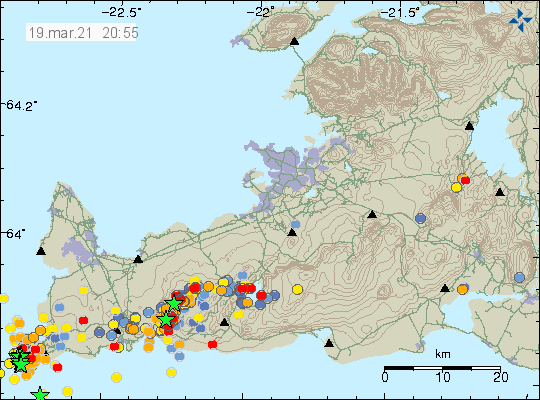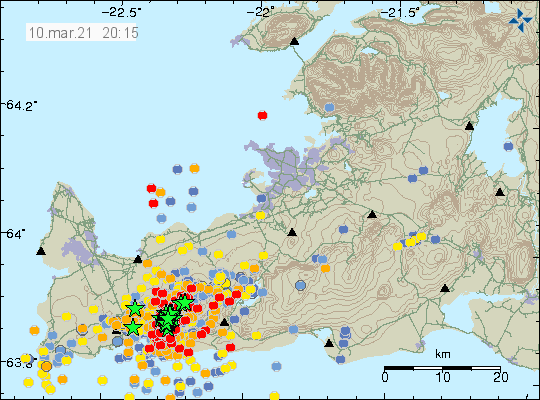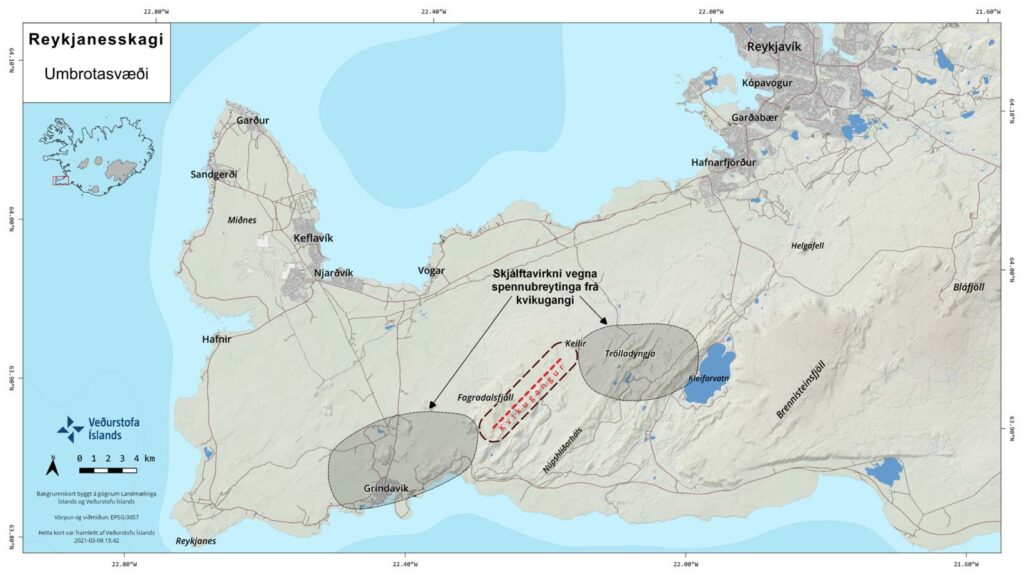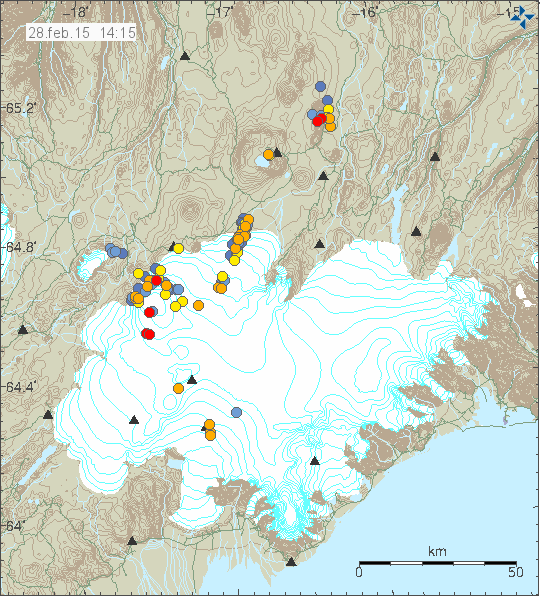This is a short article that because the situation can change without warning and article is written on 19-March-2021 at 21:07 UTC. There have been updates to names used and now Krýsuvík-Trölladyngja name is used by Global Volcanism Program and Icelandic Met Office. Suggesting that the magma that is about to erupt has its origin in Krýsuvík volcano system eat of current centre of activity. This sometimes happens in Iceland when magma travels long distances deep underground.

Today at 15:01 an earthquake took place with magnitude of Mw3,1. This earthquake has in my view clear signs of magma movement close to the surface as the depth of this earthquake was just 0,1 km (100 meter).

This earthquake strongly suggests that magma created it at shallow depth. It has not yet resulted in an eruption but it is a question if this the final sign before an eruption happens. The current quiet time might last up to 2 months but it is impossible to know for sure.







